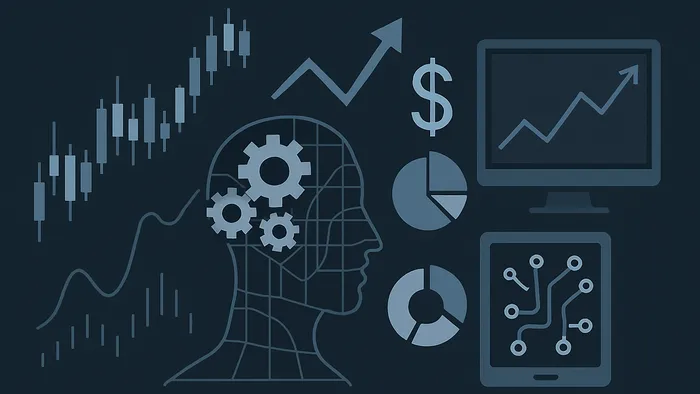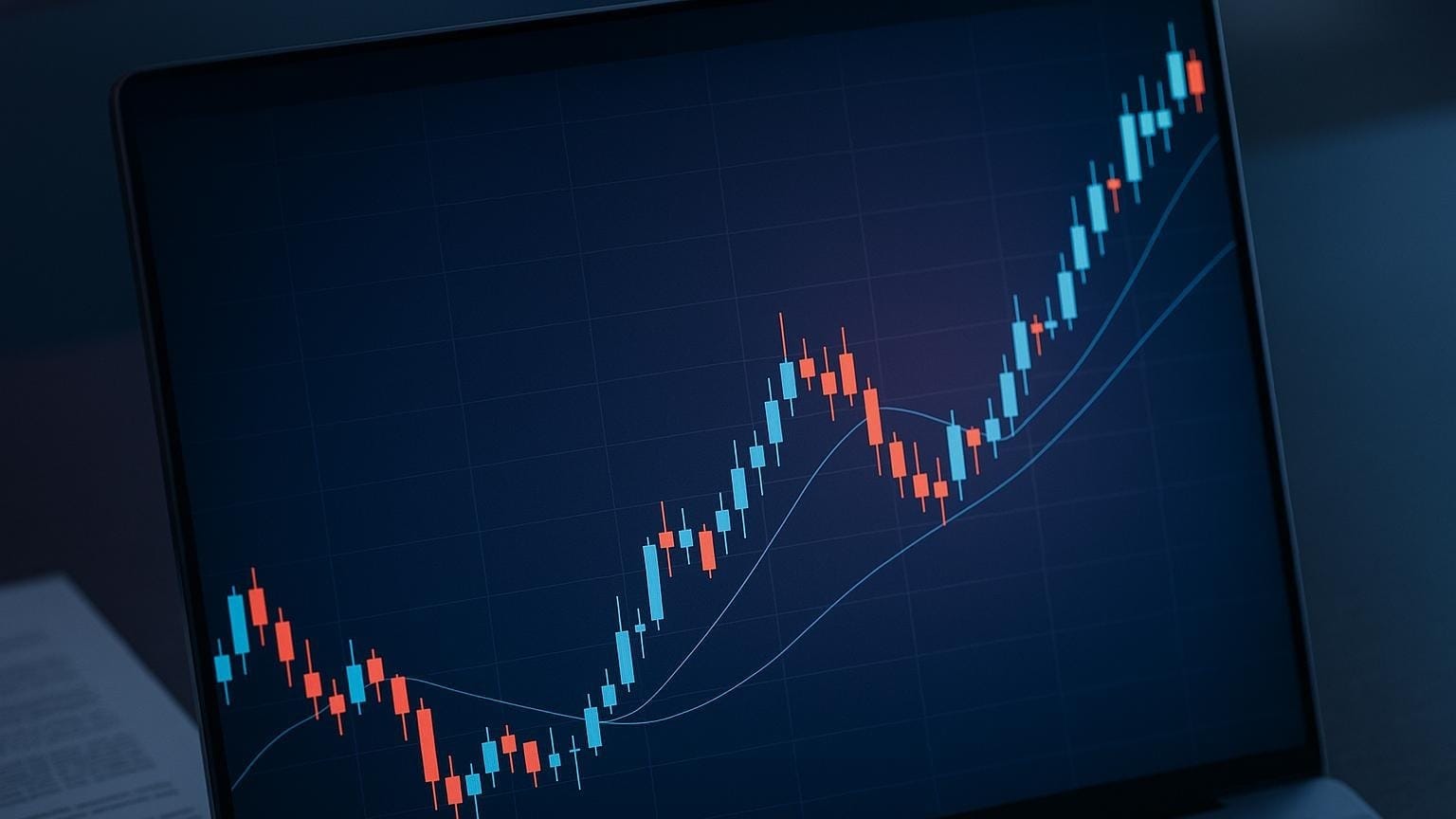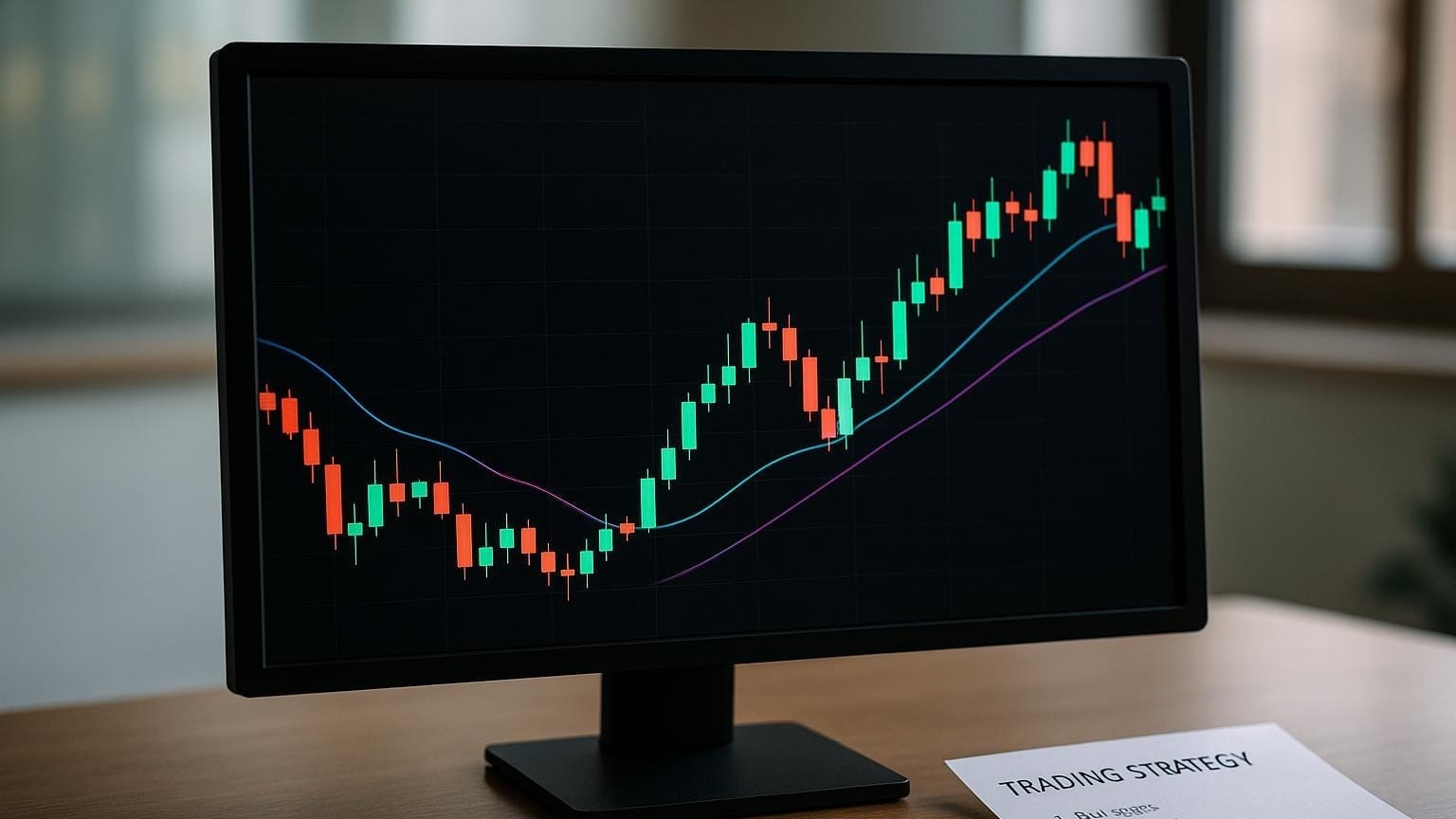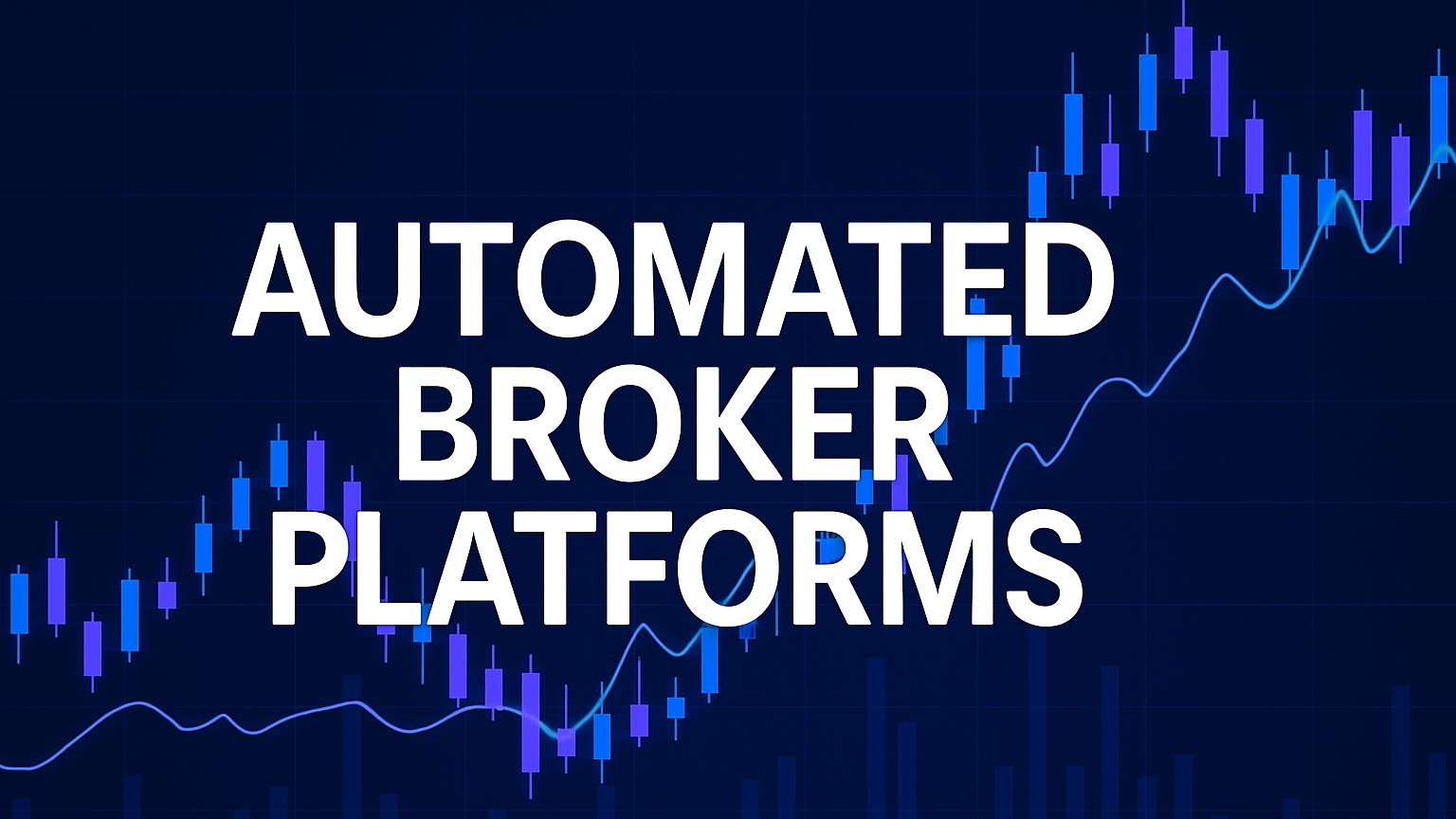Explore how institutional traders leverage algorithmic trading for speed, risk management, and market opportunities, along with retail strategies.
Algorithmic trading dominates modern financial markets. Institutions use it to execute trades faster, minimize risks, and handle large volumes efficiently. Here is what you need to know:
- Algo trading basics: Software executes trades based on preset rules, analyzing massive data in milliseconds.
- Institutional methods: High-frequency trading (HFT), price arbitrage, and advanced execution systems like VWAP and time-weighted strategies.
- Key tools: Platforms such as Bloomberg Terminal and QuantConnect, plus programming languages like Python and C++ power these systems.
- Risk management: Real-time analytics, pre-trade checks, and emergency stops ensure safety.
- Retail opportunities: Affordable resources such as advanced indicator libraries on TradingView and platforms like TradeStation enable small-scale traders to adopt simplified professional strategies.
| Aspect | Institutional Traders | Retail Traders |
|---|---|---|
| Capital Access | Large reserves | Limited funding |
| Speed | Milliseconds with HFT | Slower because of platform limitations |
| Tools | Bloomberg Terminal, FPGA hardware | TradingView indicators, TradeStation |
| Risk Management | Advanced systems with global oversight | Individual-level management |
While institutions dominate with speed and scale, retail traders can still benefit by leveraging simplified strategies and affordable resources.
$16 B hedge fund CIO explains quantitative trading
Top Institutional Trading Methods
Speed Trading Techniques
High-frequency trading systems operate at lightning-fast speeds, as quick as 10 milliseconds. This allows institutions to take advantage of even the smallest price changes. Today, HFT accounts for roughly 60 percent of equity trading in U.S. secondary markets and 35 percent of trading across Europe.
To achieve these speeds, institutions invest in cutting-edge infrastructure:
| Component | Purpose | Impact |
|---|---|---|
| Co-location Services | Positions servers close to exchanges | Reduces latency |
| FPGA Hardware | Speeds up trade processing | Reduces processing delays |
| Microwave Technology | Transmits data faster than fiber optics | Outpaces traditional methods |
During volatile market periods, HFT can make up as much as 75 percent of U.S. equity trading volume, with profits reaching $60 million in a single day. Algorithms further enhance this by identifying and acting on small price differences across markets.
Market Price Differences
Institutional traders use advanced algorithms to profit from price gaps between markets. These small discrepancies, when exploited at scale, can result in substantial gains. Research indicates that latency-arbitrage races contribute about 20 percent of daily trading volume in the FTSE 350 Index, equating to nearly $5 billion annually in global equity markets.
"Arbitrage is the simultaneous purchase and sale of an asset in different markets to exploit tiny differences in their prices." Investopedia
Latency-arbitrage races occur within an average of 79 microseconds, with associated liquidity costs of 0.53 basis points. These figures highlight the precision and speed required in institutional trading. Beyond speed and price gaps, institutions also rely on sophisticated systems to handle large trades effectively.
Trade Execution Systems
Execution management systems are vital for managing large trades across multiple venues. Tools like Bloomberg EMSX connect to over 2,500 brokers worldwide, while REDI EMS links to more than 650 brokers through Autex Trade Route, handling over 40 billion shares daily.
Key strategies include:
| Strategy Type | Primary Use | Market Impact |
|---|---|---|
| VWAP | Matches volume-weighted average price | Limits market disruptions |
| Time-weighted | Executes trades over set time periods | Lowers timing-related risks |
| Implementation Shortfall | Balances timing risks with market impact | Optimizes large transactions |
"Electronic trading and algorithmic trading are both widespread and integral to the operation of our capital markets." U.S. Securities and Exchange Commission
These systems provide institutional traders with customizable workflows, real-time analytics, and robust risk management tools. Their broker-neutral design ensures access to a wide range of liquidity sources while maintaining high execution standards, even in fluctuating market environments.
Trading Software and Systems

Professional Trading Platforms
The Bloomberg Terminal is a staple in institutional trading, boasting over 350,000 users globally. It provides access to more than 50 million financial instruments across various asset classes, with a data accuracy rate of 97 percent and a user satisfaction rate of 91 percent.
Here is a quick comparison of key institutional trading platforms:
| Platform | Core Capabilities | Notable Features |
|---|---|---|
| Bloomberg Terminal | Multi-asset execution, order management | Excel integration, color-coded market sectors |
| LSEG Workspace | Workflow tools, Reuters News access | Customizable interface, broker research access |
| QuantConnect | Algorithm development, live trading | $45 billion plus monthly notional volume, 500,000 plus backtests per month |
"The Bloomberg Terminal revolutionized an industry by bringing transparency to financial markets." Bloomberg Terminal
The Bloomberg Terminal is priced at approximately $25,000 annually, offering coverage in 175 countries and access to over 70 years of historical data. These platforms are essential for institutional traders, particularly those developing algorithmic strategies.
Coding for Trading
Programming plays a critical role in modern trading systems. Institutions often use specific languages tailored to their needs:
| Language | Primary Use Case | Key Advantage |
|---|---|---|
| Python | Data analysis, machine learning | Extensive library support |
| C++ | High-frequency trading | Ultra-fast processing |
| Java | Complex trading systems | Cross-platform compatibility |
"Effective algorithmic strategies require mastering programming, market analysis, and systematic backtesting." QuantifiedStrategies.com
By leveraging these programming languages, institutions create and refine algorithms designed for speed, accuracy, and adaptability in various market conditions.
Testing Trading Strategies
Institutional traders prioritize rigorous testing to fine-tune their strategies. Platforms like Quantum and QuantConnect allow for detailed market simulations and optimization.
Key testing elements include:
- Simulating market conditions to reflect real-world scenarios
- Ensuring regulatory compliance
- Stress-testing under extreme market situations
- Optimizing parameters for different asset classes
QuantConnect’s open-source LEAN engine handles over 500,000 backtests every month, enabling traders to refine their strategies with precision. These tools ensure strategies are both effective and resilient in dynamic markets.
Managing Trading Risks
Trade Monitoring Systems
Institutional trading relies on sophisticated systems to keep losses in check. Advanced Risk Management Systems work on multiple levels. Strategy-level RMS focuses on individual algorithms, while global RMS oversees the entire trading operation.
Key components include:
| Component | Function | Implementation |
|---|---|---|
| Real-time Analytics | Aggregates market data | Monitors data continuously from various sources |
| Order Manager | Conducts pre-trade checks | Verifies orders automatically before execution |
| Emergency Stops | Suspends trading quickly | Instantly shuts down algorithms if needed |
For instance, VisualHFT provides detailed, real-time market data across trading infrastructures. These tools are essential for ensuring that algorithmic trading follows strict rules and avoids unnecessary risks.
Following Trading Rules
In institutional trading, sticking to rules is non-negotiable. Regulatory compliance and risk limits are key, with the one-percent rule being a cornerstone. This rule limits risk exposure to 1 percent of the total trading capital per trade. For example, a $10 million account would allow a maximum risk of $100,000 per trade.
Risk management frameworks often include:
- Running extensive tests in controlled environments
- Applying strict validations, especially during system rollouts
- Continuously checking compliance with regulations
Market Crisis Planning
Institutions go beyond daily monitoring by preparing for market crises with advanced strategies. Position-sizing algorithms, for instance, adjust trade volumes dynamically based on factors like market volatility, liquidity, portfolio risk, and stress indicators.
Trailing stops and dynamic thresholds are also widely used. These tools adapt to market changes, allowing algorithms to take advantage of upward trends while minimizing losses during downturns.
Predictive analytics play a critical role here. By monitoring market conditions and tweaking trading parameters in real time, institutions can stay ahead of disruptions and manage risks more effectively.
Using Pro Methods at Home
Small-Scale Pro Strategies
Retail traders can apply simplified versions of professional strategies on a smaller scale. For instance, a basic momentum strategy tested on Bitcoin, buying when the closing price is higher than it was 25 days ago and selling when it is lower, outperformed a standard buy-and-hold approach.
Another example is the Rubber Band Strategy, which works well with the Nasdaq 100 (QQQ). This mean-reversion strategy delivered a 6.9 percent annual return while being invested only 15 percent of the time, with an average gain of 0.7 percent per trade.
Let us take a closer look at retail platforms offering high-end tools at affordable prices.
Retail Platform Comparison
| Platform | Key Features | Monthly Cost |
|---|---|---|
| TradeStation | EasyLanguage coding, $0 stock trades | $0 base fee |
| Interactive Brokers | Multi-asset trading, advanced APIs | $0 base fee |
| TrendSpider | Automated trading bots | $48 |
| Trade Ideas | No-code algo trading | $167 |
Limits for Small Traders
Retail traders face several challenges when trying to implement professional strategies:
- Capital Constraints: Retail traders often need to scale down their positions. Hedge fund investments, by contrast, typically require at least $1 million in net worth and $250 thousand in annual income.
- Technical Limitations: Retail platforms often have higher latency compared to institutional systems, which can affect execution speed.
Given these challenges, retail traders should focus on strategies that align with their resources. Specializing in one market instead of spreading efforts too thin can be more effective. This approach is especially relevant in the growing algo-trading market, expected to increase from $2.03 billion to $3.56 billion by 2030.
Summary
Main Lessons
Fast trade execution has made algorithmic trading a must-have for professional traders. By systematically analyzing data, these traders can spot opportunities that human traders might miss. Diversification plays a major role, as shown by institutional trading methods. Professionals often use multiple strategies across different asset classes and market conditions.
Getting Started
Here is how you can put these lessons into action using specific strategies and resources:
| Starting Point | Implementation | Expected Outcome |
|---|---|---|
| Basic Strategy | Use advanced price-action tools on TradingView (about $40 per month) | Automated buy and sell signals |
| Risk Management | Set clear stop-loss levels and position-size limits | Protect your capital |
| Strategy Testing | Leverage AI-based backtesting tools | Refine strategies with data insights |
Choose platforms that offer intuitive strategy editors and reliable backtesting tools. Successful algorithmic trading depends on a systematic approach. While retail traders might not achieve the same execution speeds as institutions, they can still benefit from automated systems and disciplined rules.








